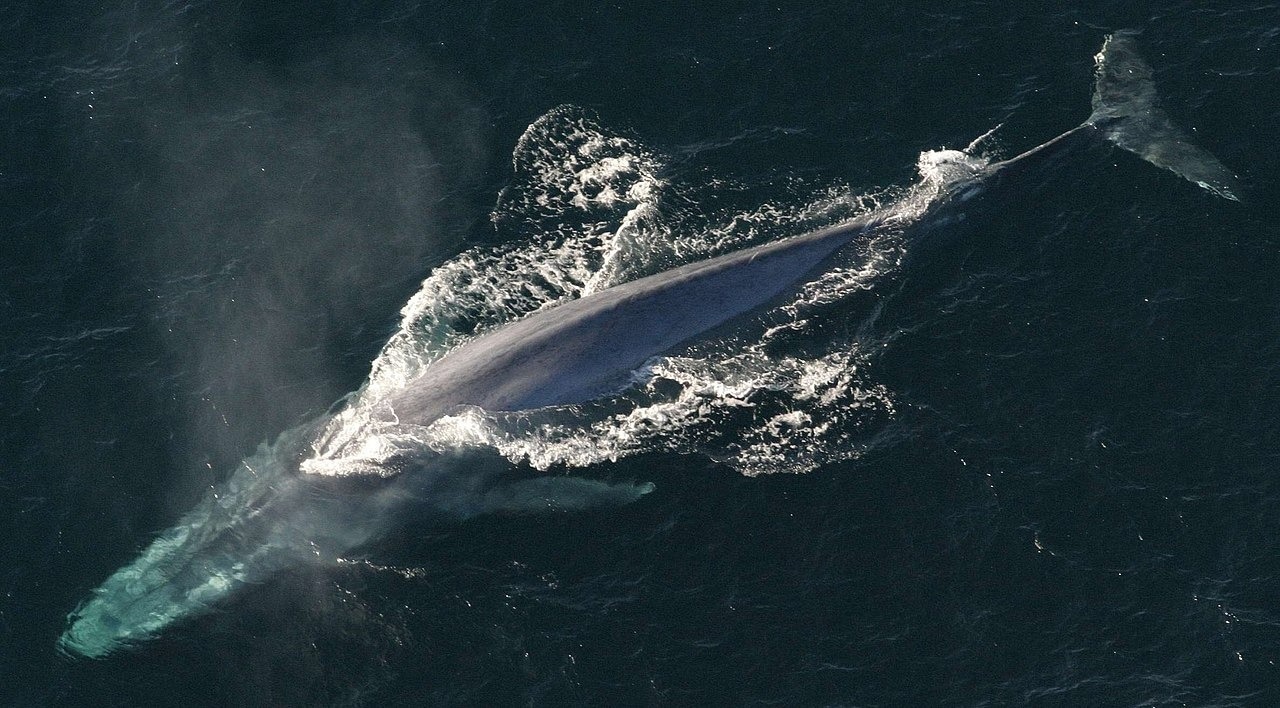Reviewed by Danielle Ellis, B.Sc.Jan 23 2024
Certain gene regions in cetaceans (whales, porpoises, and dolphins) play a role in explaining the remarkable size differences among species, such as the Blue whale (Balaenoptera musculus), which can reach lengths of up to 30 m – almost 10 m longer than a bus – in contrast to the Bottlenose dolphin (Tursiops truncatus), which typically reaches a maximum length of 4 m.
 The Blue whale (Balaenoptera musculus) can reach 30 meters in length, or almost 10 meters longer than a bus. Image Credit: NOAA Photo Library.
The Blue whale (Balaenoptera musculus) can reach 30 meters in length, or almost 10 meters longer than a bus. Image Credit: NOAA Photo Library.
The insights gained from this research may also contribute to the development of new cancer treatments.
These findings are detailed in an article published in the journal BMC Ecology and Evolution by a team of researchers from the State University of Campinas Institute of Biology (IB-UNICAMP) in São Paulo state, Brazil.
Although cetaceans are divided into two well-defined evolutionary groups, Odontoceti [dolphins and toothed whales] and Mysticeti [baleen whales that have no teeth and filter zooplankton through keratin bristles, including blue whales and humpback whales, for example], we found in the promoter region of the gene NCAPG a division between those with lengths of more or less than 10 m – giants and non-giants.”
Felipe Silva, Study First Author, Institute of Biology, University of Campinas
The promoter region of a gene is a DNA sequence situated upstream of the protein-coding region, where the messenger RNA responsible for mediating protein synthesis is generated.
This region initiates the transcription process, during which an RNA copy of the gene's DNA sequence is produced. Functioning as a regulator of gene expression, the promoter region plays a crucial role in orchestrating the activity of the gene.
Examining the NCAPG promoter region, responsible for either enhancing or inhibiting protein production, revealed that the sperm whale (Physeter catodon), boasting teeth and an average length of 20 m, is most closely related to Mysticeti, surpassing 10 m in length and lacking teeth.
Additionally, the study grouped the Common minke whale (Balaenoptera acutorostrata), with an average length of 8.8 m, alongside non-giant toothed cetaceans.
Our findings don’t change the group’s evolutionary tree but constitute new evidence that giant size has a genomic basis. The analysis of other genes confirms the evolutionarily established groups, meaning that the characteristics of minke whales and sperm whales are probably convergent adaptations – similar traits that evolve independently in separate groups via different routes.”
Mariana Freitas Nery, Professor, Institute of Biology, University of Campinas
Mariana Freitas Nery supervised Silva’s research for his master’s degree.
The study was part of the project “Using comparative genomics to understand convergent evolution of mammals: tracking the molecular footprints of marine and riverine environment colonization”, headed by Nery and supported by FAPESP.
Suppression of cancer
The researchers directed their attention to four genes previously examined in a study that scrutinized modifications to gene coding regions. In this investigation, the emphasis shifted to the regulatory regions associated with the same genes. Non-coding sequences, encompassing regulatory functions like promoters and enhancers, play a crucial role in coordinating the spatiotemporal expression of genes.
The analysis revealed that these regulatory regions impacted not only the size of the animals but also their capacity to suppress cancer. Despite the anticipation of tumors in animals with a considerable number of cells, cetaceans exhibit an extraordinarily low incidence of cancer.
It was important to analyze the coding and non-coding portions of these cetaceans’ genomes since both proved significant for these traits, which evolved very rapidly in these animals, as the analysis also showed.”
Felipe Silva, Study First Author, Institute of Biology, University of Campinas
The proteins responsible for regulating body size exhibited heightened activity in giant cetaceans. Conversely, these same genes acted as inhibitors in cetaceans with lengths under 10 m, functioning akin to brakes on the size of individuals within this group.
Notably, some of the genes associated with gigantism in cetaceans also serve as tumor suppressors. Similar roles are played by parts of the genomes in other mammals, counteracting the impact of having a large number of cells, which would otherwise make them more susceptible to cancer due to replication flaws.
“Humans also have these genes, so it would be interesting to find out more about how they suppress the formation of tumors in these animals. Such knowledge could help develop future cancer treatments via activation or inhibition of specific regions of the genome, for example,” Nery concluded.
Source:
Journal reference:
Silva, F. A., et al. (2023). Patterns of enrichment and acceleration in evolutionary rates of promoters suggest a role of regulatory regions in cetacean gigantism. BMC Ecology and Evolution. doi.org/10.1186/s12862-023-02171-5.